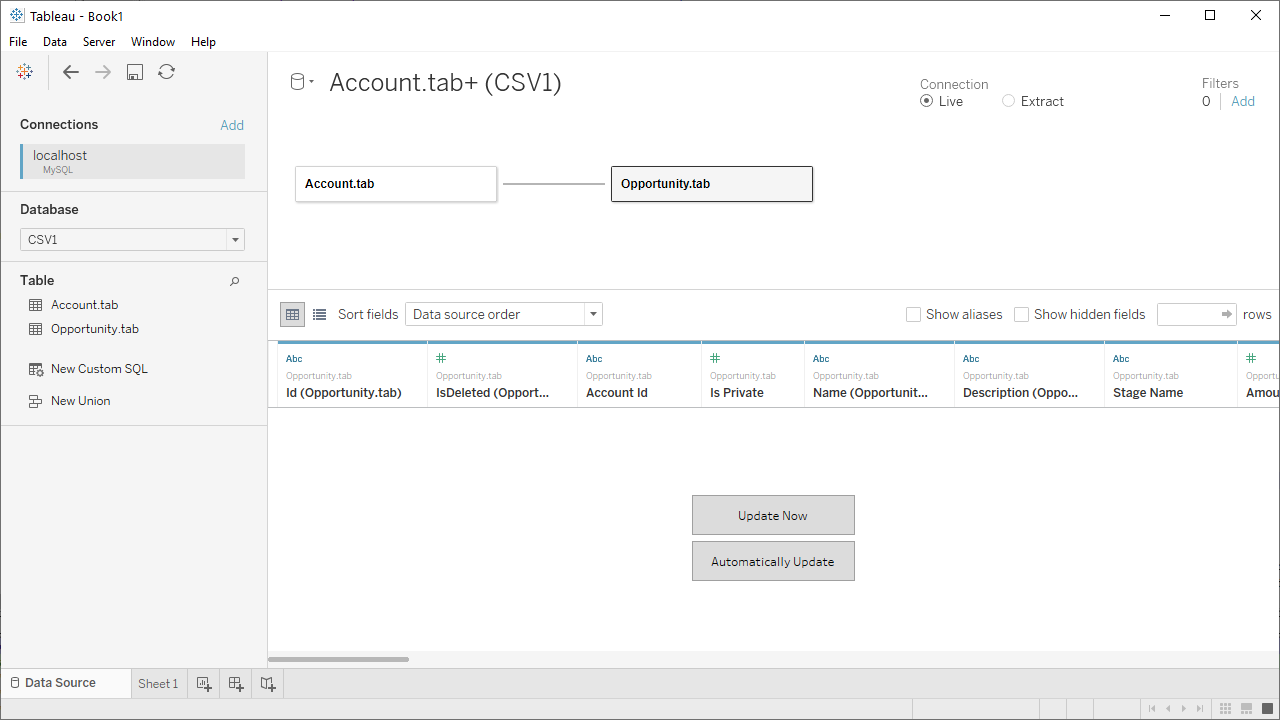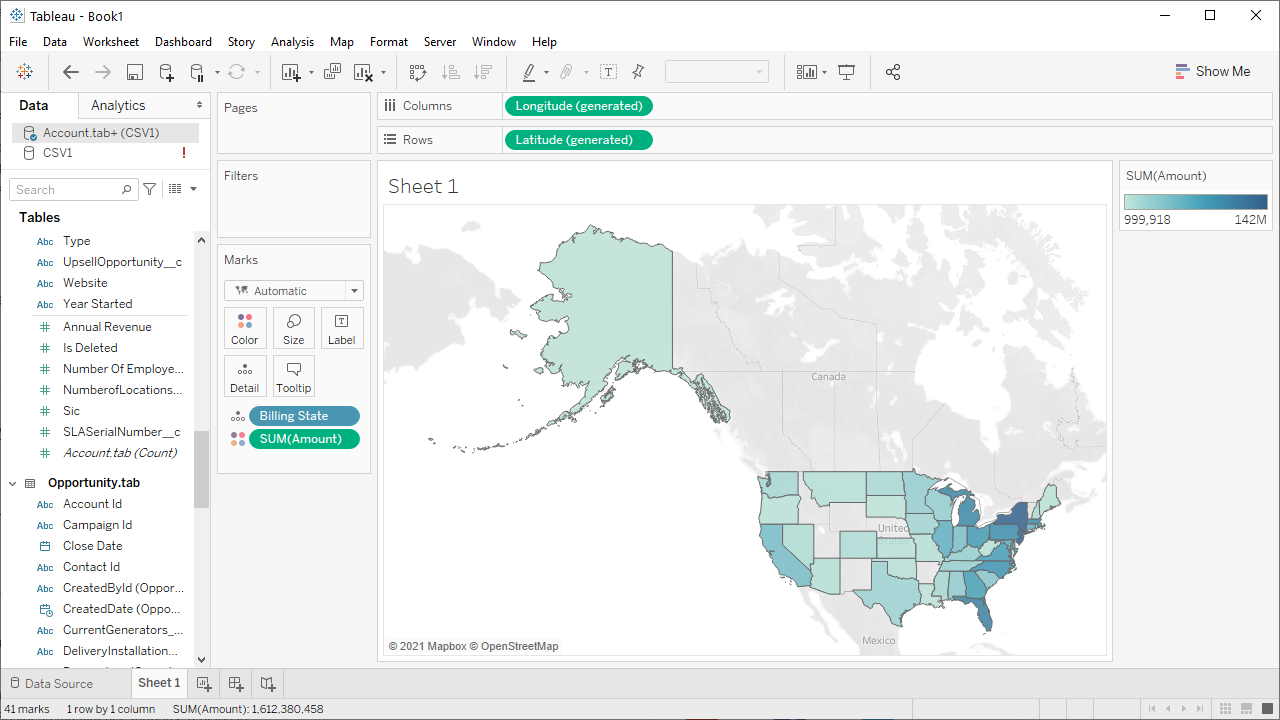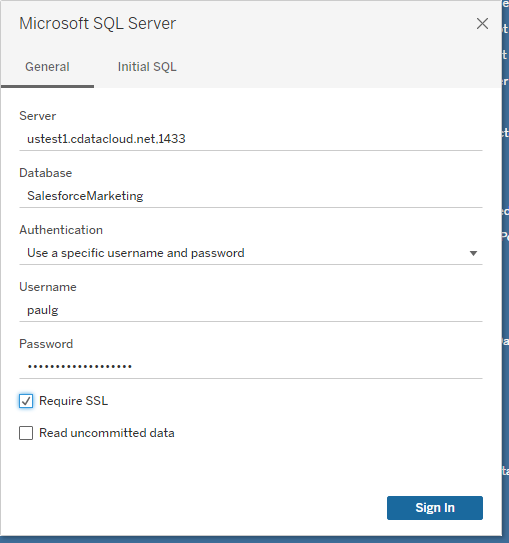Discover how a bimodal integration strategy can address the major data management challenges facing your organization today.
Get the Report →Visualize Sugar CRM Data in Tableau Desktop (through CData Connect)
Create a virtual SQL Server database for Sugar CRM data in CData Connect (or Connect Server) and build visualizations from live Sugar CRM data in Tableau Desktop.
Tableau is a visual analytics platform transforming the way businesses use data to solve problems. When paired with CData Connect (or Connect Server), you can easily get access to live Sugar CRM data within Tableau.
CData Connect Server provides a pure SQL Server interface for Sugar CRM, allowing you to easily build reports from live Sugar CRM data in Tableau Desktop — without replicating the data to a natively supported database. As you build visualizations, Tableau Desktop generates SQL queries to gather data. Using optimized data processing out of the box, CData Connect Server pushes all supported SQL operations (filters, JOINs, etc) directly to Sugar CRM, leveraging server-side processing to quickly return the requested Sugar CRM data.
This article shows how to create a virtual SQL Server database for Sugar CRM, connect to the virtual database in Tableau, and build a simple chart.
Create a Virtual SQL Server Database for Sugar CRM Data
CData Connect Server uses a straightforward, point-and-click interface to connect to data sources and generate APIs.
-
Login to Connect Server and click Connections.
![Adding a connection]()
- Select "Sugar CRM" from Available Data Sources.
-
Enter the necessary authentication properties to connect to Sugar CRM.
The User and Password properties, under the Authentication section, must be set to valid SugarCRM user credentials. This will use the default OAuth token created to allow client logins. OAuthClientId and OAuthClientSecret are required if you do not wish to use the default OAuth token.
You can generate a new OAuth consumer key and consumer secret in Admin -> OAuth Keys. Set the OAuthClientId to the OAuth consumer key. Set the OAuthClientSecret to the consumer secret.
Additionally, specify the URL to the SugarCRM account.
Note that retrieving SugarCRM metadata can be expensive. It is advised that you store the metadata locally as described in the "Caching Metadata" chapter of the help documentation.
![Configuring a connection (SQL Server is shown).]()
- Click Save Changes
- Click Privileges -> Add and add the new user (or an existing user) with the appropriate permissions.
With the virtual database created, you are ready to connect to Sugar CRM data from Tableau Desktop.
Visualize Live Sugar CRM Data in Tableau Desktop
The steps below outline connecting to the virtual Sugar CRM database in CData Connect and building a simple visualization from the data.
- Open Tableau and click "Microsoft SQL Server" under Connect -> To a Server.
- In the connection wizard, enter the values for your CData Connect instance and click "Sign In"
- Server: the address of your Connect instance and port of the TDS endpoint, separated by a comma (default port is: 1433)
- Database: the virtual database you configured for the Sugar CRM data
- Username & Password: the credentials for a CData Connect user
![Connect to CData Connect from Tableau Desktop]()
- Select your newly created database and the table(s) you wish to visualize (defining relationships for JOINed tables as needed).
- Select Dimensions and Measures and configure your visualization.


SQL Access to Sugar CRM Data from On-Premise Applications
At this point, you have a direct connection to live Sugar CRM data from your Tableau Desktop workbook. You can create new visualizations, build dashboards, and more. For more information on gaining SQL access to data from more than 200 SaaS, Big Data, and NoSQL sources (including Sugar CRM) from desktop applications like Tableau refer to our CData Connect page or download a free trial.









